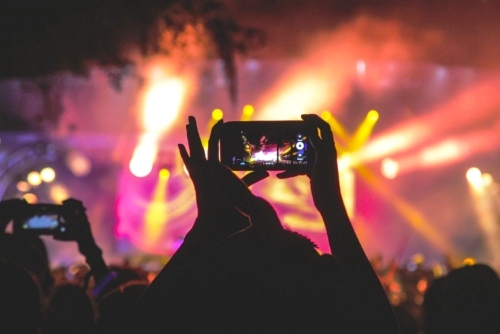
Kids won't fall in love with sustainability just by hearing about it once in class. It takes real experiences—messy, hands-on, sometimes unexpected ones. That's where after-school programs come in. These programs give kids the chance to explore green ideas without feeling like they're stuck in a lesson. Whether it's planting vegetables, building solar ovens, or making art out of trash, they're learning by doing. And the cool part? They start connecting those actions to their own lives. Suddenly, sustainability isn't just a big word—it's something they're part of. And that's where real change starts to grow.
Learning Through Action
Getting kids to care about sustainability doesn't mean sitting them down with a textbook. The magic often happens when they're outside, getting their hands dirty - literally. Gardening clubs are a perfect example. When kids plant something, water it, and watch it grow, it sticks with them. It's not just about the biology of the plant; it's about patience, care, and understanding where their food comes from.
When a kid sees that a yogurt container can become a bird feeder or a milk jug can be turned into a watering can, recycling becomes more than a chore. It turns into creativity. Upcycling projects give them a chance to be both eco-friendly and inventive, which is a win-win in any classroom or community center.
Small science projects like building a solar oven or creating a wind-powered car aren't just cool experiments—they're subtle ways to introduce renewable energy. It's one thing to hear about solar panels in a video. It's another way to cook a marshmallow using the sun and foil. That sticks in the memory.
Cleanup drives are another surprisingly powerful tool. It's one thing to talk about pollution. It's something entirely different when you're picking up plastic bottles off the ground and realizing they shouldn't be there in the first place. It clicks.
Tying Sustainability to Everyday Life
Kids don't automatically connect climate change or pollution to their day-to-day routines—but once you show them how their small choices matter, that's when things start to shift. Something simple like comparing waste from a packed lunch with reusable containers versus single-use plastic actually makes the idea of sustainability tangible. They get it because they can see it.
Money lessons also tie in really well here. Teaching them how to budget for sustainable shopping (like choosing secondhand clothes or items with less packaging) turns environmentalism into a smart, personal decision. This is one of the big roles of environmental education programs. It becomes about more than the planet; it becomes about taking control over their own habits in a practical way.
Challenges like packing a zero-waste lunch for a week work because they're hands-on, a little competitive, and totally doable. Plus, it allows them to involve their parents or siblings in the process, so sustainability becomes a shared goal instead of just an individual one. That sense of community really boosts engagement.
Using Role Models and Mentors
There's something about hearing it from someone who's been there. When a guest speaker walks into the room and starts talking about their job in environmental science or clean energy, it hits differently. Kids are way more likely to listen if the person is relatable and has a story to tell, not just a job title.
When a local business owner comes in and explains how their cafe uses compostable cups or donates scraps to a local farm, it suddenly makes those “green ideas” feel real and local. It's not just what's happening somewhere else in the world—it's happening right in their community, and maybe even in places they visit often.
When you involve older students—high schoolers or college students already interested in sustainability—you're giving younger kids someone they can look up to. Peer mentorship works because it doesn't feel like school. It feels like advice from someone just a few steps ahead, making the whole idea more achievable.
Sometimes, a green team led by students themselves makes the biggest impact. You give them a role and let them lead, and suddenly they're not just absorbing information—they're shaping it. That kind of responsibility can spark a real passion that carries over into other parts of their life, too.
Creative Expression With a Purpose
Art's always been a tool for storytelling, and when kids use it to talk about sustainability, it gets powerful fast. Making collages from old magazines or sculptures from recycled cardboard doesn't just teach them to reuse—it gives them a way to say something about the world they live in. Plus, it's fun and messy, which helps.
You can take things a step further with music, drama, or short films that center around environmental messages. Let them write a play about saving a forest or a song about ocean pollution. When kids take the lead creatively, they become emotionally invested. They're not just learning—they're expressing, and that makes all the difference.
Writing letters to city officials or local leaders about green issues adds another layer. It helps them realize their voice matters, even if they're young. A well-written letter or a thoughtful drawing can make an impression, and sometimes, those responses they get back are the first time they feel heard by someone outside of school or home.
You'd be surprised how far a student-led awareness campaign can go. Whether it's posters in the hallway or announcements during morning assembly, when students push the message, others listen. They're not just talking about change—they're starting it.
Wrap up
When after-school programs are done right, they do more than fill time—they build curiosity, confidence, and purpose. You see, it's not about lecturing kids into caring about the planet. It's about giving them the tools, freedom, and support to discover why it matters to them. That kind of discovery sticks. It turns a garden into a lesson, a recycled sculpture into a statement, and a simple challenge into a lifelong habit. With the right mix of fun, responsibility, and creativity, these programs can absolutely spark a lasting passion for sustainability. And that's something worth investing in.
MORE ON THE FLASH LIST
































